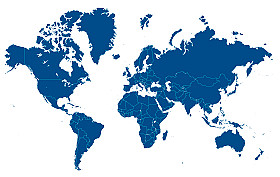 A geostatistical modeling study published in the journal The Lancet provides an updated understanding of the global epidemiology of the sickle hemoglobin (HbS) mutation among neonates. Researchers reviewed geographically-specific surveys of sickle hemoglobin from 1950-2010 to construct a global map of the HbS allele frequency distribution using a total of 1211 spatially unique data points. The analysis found substantial spatial heterogeneity in HbS allele frequency, and particularly high HbS frequencies in sub-Saharan Africa, the Middle East, and India. Additionally, researchers suggested that alongside human migration, the HbS allele has spread from malaria-endemic regions to other regions worldwide, including western Europe and the eastern coast of the Americas. Incorporating high-resolution demographic data allowed the research team to additionally estimate global, regional, national, and subnational prevalence of HbS neonate homozygotes and heterozygotes. These estimates suggested that 5,476,000 neonates were affected by HbS worldwide in 2010. HbS is expected to have an increasing presence globally.
A geostatistical modeling study published in the journal The Lancet provides an updated understanding of the global epidemiology of the sickle hemoglobin (HbS) mutation among neonates. Researchers reviewed geographically-specific surveys of sickle hemoglobin from 1950-2010 to construct a global map of the HbS allele frequency distribution using a total of 1211 spatially unique data points. The analysis found substantial spatial heterogeneity in HbS allele frequency, and particularly high HbS frequencies in sub-Saharan Africa, the Middle East, and India. Additionally, researchers suggested that alongside human migration, the HbS allele has spread from malaria-endemic regions to other regions worldwide, including western Europe and the eastern coast of the Americas. Incorporating high-resolution demographic data allowed the research team to additionally estimate global, regional, national, and subnational prevalence of HbS neonate homozygotes and heterozygotes. These estimates suggested that 5,476,000 neonates were affected by HbS worldwide in 2010. HbS is expected to have an increasing presence globally.
Reference
1. Piel FB, Patil AP, Howes RE, Nyangiri OA, Gething PW, Dewi M, Temperley WH, Williams TN, Weatherall DJ, Hay SI. Global epidemiology of sickle haemoglobin in neonates: a contemporary geostatistical model-based map and population estimates. Lancet 2013;381: 142-51.
